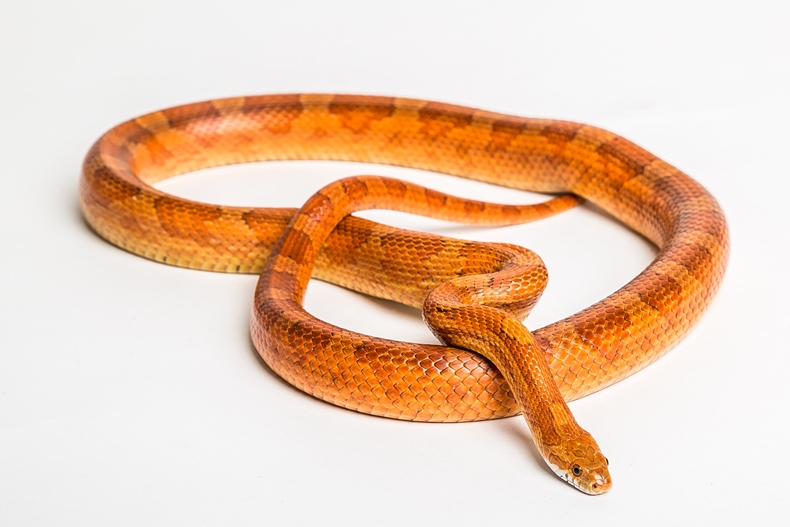Have you seen a corn snake?
Corn
snakes pose a risk to Australia's agricultural industry, the environment and human
health. They
are occasionally kept illegally as pets, and have the ability to carry serious exotic diseases affecting
humans, pets, livestock and
native wildlife. This
species is a major concern to Australia's biosecurity as it can tolerate a variety of habitats, and is
well suited to
Australian conditions. If they were to
establish, it is unlikely that complete eradication
would be possible. If you have seen a corn snake in
captivity or in the wild, please report it immediately using this website.
Quick
facts
Did you know that corn
snakes eat a variety of native species and can
out-compete native Australian wildlife for resources? You can do your part
to keep Australia safe by reporting this species today!
How to
identify this species
Scientific
name
Pantherophis guttatus / Elaphe guttata
Where are they
from
Southern United
States of America and Mexico.
Size
Juvenile's
average 22-36cm, and adults can reach 180cm in length.
Appearance
Colours
include orange to brownish-yellow, with black-edged and red blotches down the centre of the
back. Colour pigments
include bright red, orange, yellow and white combinations. Eye colour ranges from red, orange and
pink. Generally, there
will be alternating black marks on either side of the snake’s underbelly, with two distinctive black
strips at the tail tip. Most corn snakes will have a spear-shaped
pattern on their head.
White and
yellow corn snake
.jpg)
Orange and red
corn snake

Spear pattern
on head
.jpg)
Colour - top
side
.jpg)
Colour -
underside
.jpg)
Behaviour
Corn snakes
are a nocturnal species that visit burrows of other species, and explore tree canopies looking for food
and shelter. They prefer
to remain hidden during the day, residing under bark, logs, rocks and other matter. Corn snakes will
hibernate over winter.
Life cycle and breeding
Corn snakes
become reproductively active as they reach two years of age. They can lay between 10-30 eggs, which
normally hatch at about 65 days. They can live up to 25 years in captivity.
Habitat
Corn snakes
prefer open and dry habitats such as fields, woodlands, grasslands and rocky areas. They can tolerate a range of
habitats including forests, agricultural farm land and semi-urban landscapes. They are a ground dwelling species, however,
may also climb trees and can be found in farm sheds or abandoned buildings. Because of these habitat features, they are
highly suited to Australian conditions. Outside of their natural
geographic range, populations have established in
the Cayman and Virgin Islands, and the Bahamas.
Similar native
species
Your safety and other information
Safety
precautions
Although corn snakes are
non-venomous, they can carry exotic diseases and parasites that are harmful to humans and other
animals. Corn snakes are known to carry Cryptosporidium, a parasite that can cause
respiratory conditions in humans, domestic animals and wildlife. They can also carry Heartwater (Cowdria
ruminatntium), a tick-borne rickettsial disease that can be fatal
to livestock.
For these reasons, the
following precautions should be followed:
• Contact a wildlife
handler or local vet to assist with safely containing the animal.
• Wear disposable gloves when handling animals.
• Wash hands well in warm soapy water after handling animals.
Legal
implications
The importation, keeping,
breeding and trade of this species in all states and territories is illegal. If you have a corn snake or
would like further information about this species in your state or territory, please contact your local
authorities contact your local authorities here.
